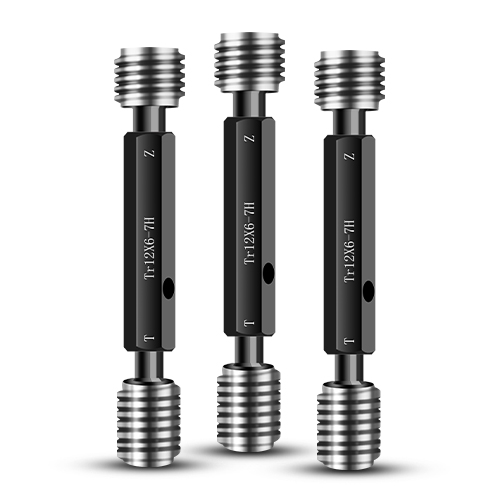The Essential Guide to Thread Plug Gauges: Advantages and Unique Features
2025-09-17
In precision manufacturing and quality control, accuracy is non-negotiable. Thread Plug Gauges are indispensable tools for verifying the accuracy of internal threads, ensuring that every part meets stringent specifications. With decades of industry application, these gauges provide reliability and efficiency in production environments. Here’s why Thread Plug Gauges are a critical investment for engineers, machinists, and quality assurance professionals.
Advantages of Thread Plug Gauges
-
Precision Measurement: Thread Plug Gauges offer unmatched accuracy in checking the pitch diameter, thread form, and lead of threaded holes. This helps prevent costly errors and ensures parts assemble correctly.
-
Durability and Longevity: Manufactured from high-grade materials like hardened steel or carbide, these gauges resist wear and corrosion, maintaining their precision through repeated use in demanding conditions.
-
Ease of Use: Their simple go/no-go functionality allows for quick and definitive checks. A “go” gauge should thread in easily, while a “no-go” gauge must not over-rotate, enabling fast decision-making on the production floor.
-
Versatility: Available in various thread standards (e.g., UN, Metric, NPT), Thread Plug Gauges support global manufacturing requirements and are essential for maintaining interoperability across components.
-
Cost Efficiency: By catching defects early, they reduce scrap rates, rework, and potential product failures, saving both time and money.
Unique Features and Technical Specifications
Thread Plug Gauges are designed with features that enhance their functionality and reliability. Below are key parameters that define their quality.
Common Features:
-
Material: Typically made from hardened tool steel or carbide for durability.
-
Coating: Often coated with black oxide or chrome to resist rust and reduce friction.
-
Handle Design: Ergonomic handles provide a secure grip and are usually marked with thread specifications for easy identification.
-
Temperature Compensation: Precision-ground to perform accurately at a standard temperature of 20°C (68°F).
Detailed Specification Table
| Feature | Description | Common Standards |
|---|---|---|
| Thread Type | Checks unified (UN, UNC, UNF), metric (M), pipe (NPT, NPTF, BSPT), and many more. | ANSI/ASME B1.2, ISO 1502 |
| Accuracy Class | Defined by tolerance grades (e.g., Class X, Y, Z for US; Tolerance Grade 4, 6 for ISO). | ANSI B1.2, ISO 1502 |
| Size Range | Available for a vast range of thread sizes, from tiny #0 up to several inches in diameter. | Custom and standard sizes |
| Go/No-Go Ends | The “Go” end checks maximum material condition; “No-Go” checks minimum material condition. | Standard manufacturing practice |
| Plating | Black oxide is standard; chrome plating is available for extra corrosion resistance. | N/A |
Choosing the Right Tool for the Job
Selecting the correct Thread Plug Gauges is crucial. Consider the thread standard, pitch diameter tolerance, and the material of the part you are inspecting. For high-volume production, carbide gauges offer superior wear life. For general purpose use, hardened steel with a protective coating is an excellent choice.
In summary, the reliability of your threaded assemblies depends on the quality of your inspection tools. Integrating high-precision Thread Plug Gauges into your quality control process is a proven method to ensure product integrity, streamline production, and uphold your reputation for excellence.
If you are very interested in our company's products or have any questions, please feel free to contact us.



